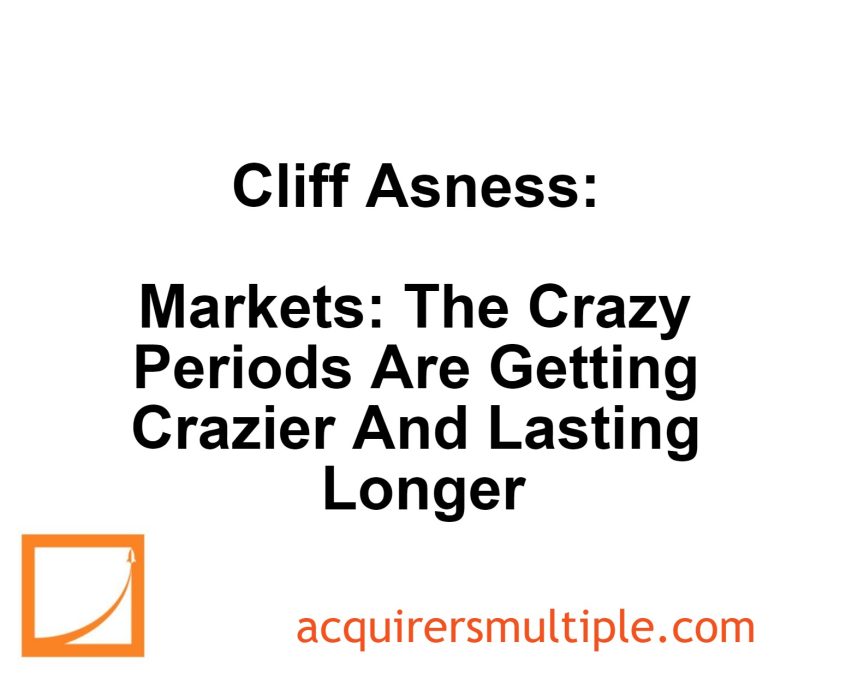In this interview with Bloomberg, Cliff Asness argues that market inefficiencies, such as wide spreads between cheap and expensive stocks, are becoming more pronounced and persistent. He explores three key reasons for this: the rise of passive investing, extended periods of ultra-low interest rates, and the influence of technology and social media.
While technology has increased the speed of market pricing, Asness suggests it hasn’t improved accuracy, potentially worsening market inefficiencies. He notes that while spreads have narrowed since the peak of the Covid era, markets remain “out of whack”.
Here’s an excerpt from the interview:
Asness: That’s exactly what we do argue. So you are totally permitted to argue that, but the bigger question I’m trying to answer is I see this as a sign of the market getting less efficient about pricing.
In principle, we all think things should get more efficient over time. Technology marches on, data is more available. Things that were available at a lag are available instantly now, but I think most of those things go to speed, not to accurate pricing.
Yeah, things get in prices faster, but I think there’s strong evidence. Not just these two things, but these are the two major ones I experience, that the crazy periods are getting crazier and lasting longer.
So the next question I ask in the paper, and this is very speculative, I admit, is why? And there are probably other great ones, but I focus on three and I’ll say them really fast.
The first is the rise of passive. That’s everyone’s favorite. Passive is broke in the market. I think that is really part of it. No one knows how many people can actually be passive without breaking the market, but we know it’s not 100%.
That’s a weird world where nobody is thinking about whether anybody is worth more than a candy store.
So the idea that there would be less could weaken the tether to reality.
We’re still, and again, I won’t talk about Nvidia in particular, but when it comes to the spread between cheap and expensive stocks, we were at a new hundredth percentile in Covid.
I jokingly called it 120th percentile, which for my math friends listening, there is no such thing as a new hundredth. But it was about 20% above the prior hundredth.
We’re back down to about the 80th percentile spread versus history We still have a little bit of a tilt down, but far smaller than when it was 120.
So I would say things are still out of whack, but it’s not an arbitrage you can drive a truck through now. I think passive is part of it, but it’s very hard to know how much.
The second one I’ll do, post-GFC, 10-15 years of super low interest rates, I don’t think justifies these spreads, and we’ve written a lot about that. But in a very non-technical sense, may that drive investors mad and to do some crazy things? Yes. That’s all I’ll say about that.
My third and favorite hypothesis, which is so counter-intuitive, is I started out saying technology might make things faster but not more accurate. It might, and in fact I would argue probably does contribute to—less accurate pricing.
You can watch the entire interview here:
For all the latest news and podcasts, join our free newsletter here.
Don’t forget to check out our FREE Large Cap 1000 – Stock Screener, here at The Acquirer’s Multiple:



